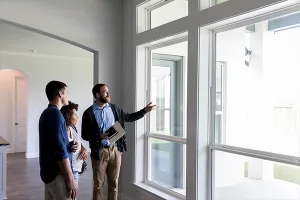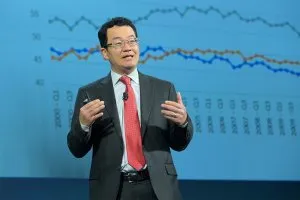Too many of the nation’s malls have been flailing for years, but there now appears to be consensus in the development sphere that the best way forward is to transform many of them into major mixed-use and walkable communities that will serve as a base camp for residents, businesses and visitors.
At least, that option is viable for some malls, says Doug Beiswenger, managing partner of LBG Real Estate Cos in Newport Beach, Calif. In July 2017, LBG purchased the Hilltop Mall in Richmond, Calif., for an undisclosed amount and has just launched its plan to redevelop the property.
“I think it’s very location specific,” says Beiswenger. “We look at a lot of malls across the country, and there are a lot where there just may not be a market to develop a mixed-used community.”
The man spearheading the transformation of the former Valley View Mall into a new community called Dallas Midtown, Scott Beck, CEO of Beck Ventures, agrees that creating new communities out of whole cloth is the answer for many distressed malls — but not all. “To me, it really depends on where these malls are located,” he asserts. “To simply say, ‘This is a mall, so we can do a mixed-use redevelopment’ isn’t accurate.”
What’s making today’s mall turnaround projects work? Much of it comes down to that old real estate adage location, location, location. But there’s more to consider, too.
What works now and where?
Beiswenger and Beck say the idea of mixed-use communities blossoming from underperforming malls is viable in locations where several factors have come together.
“My personal opinion is that there are a number of malls that are in a fairly in-between situation, where they just don’t make sense to create a mixed-use development of the property,” says Beiswenger. “You need a mall that’s gotten to a point that it’s time to do that, but you also need that population density and income to support that transformation.”
That’s what attracted Beiswenger’s company to the Hilltop Mall, which is currently performing anemically. It’s about 70 percent leased, and its maintenance and aesthetics have long been neglected. “The problem with this mall has been that the previous ownership, which was foreclosed on, hadn’t put any capital into it,” he explains. “And malls are a capital-intensive endeavor.”
Despite that, this site is a beaut in the eyes of developers like Beiswenger. “We’re looking for properties like Hilltop that have that population and a certain level of average household income of that general population,” he says. “The Hilltop property is very ideal for infill with an existing dense population with excellent income.”
It’s also 20 miles from downtown San Francisco and 25 miles south of Napa. “The city of Richmond is about to open a ferry that will go from the port to the ferry building in downtown San Francisco in 26 minutes,” notes Beiswenger. “We also have a freeway on and off ramp on the I-80 that’s named after Hilltop. This is in the East Bay of California, and you simply can’t replicate this sort of opportunity.”
That may be why Beiswenger’s team is now inundated with interest. “Since we purchased the property, we’ve received a tremendous amount of press, and we have all types of uses coming at us — retail, residential, hotel, office, medical office,” he rattles off. “The longer-term plan is to revitalize the mall and make that an excellent operation and then to develop areas of the mall that are no longer needed for parking. The property is zoned for almost 10,000 housing units, and those would all be a medium- to higher-density product with a combination of rental units and ownership. We envision a dense, truly walkable mixed-use community.”
The answer is “eatertainment”
About 1,700 miles away, Dallas Midtown meets Beck’s primary criteria for success — it’s in an urban area. The property sits in north Dallas about halfway between the city center and the Oklahoma border, and it’s flanked by 635 on the south and the Dallas tollway to the west.
“If a mall is in the center of an urbanized area, this type of redevelopment is very possible,” asserts Beck. “If the mall isn’t in the center of an urban core — maybe it’s in a tertiary market or off the beaten path — I think it becomes much more difficult to justify high-density, mixed-use development.
One factor that’s brought this issue to a head is that while mall owners have been slow to act, some now have no choice. “I don’t think the delay in redeveloping failing malls has to do with the fact that smart real estate people didn’t know what the answers were,” says Beck. “It’s been more about creating a situation whereby the capital or ownership group is forced to react.”
Beck’s company purchased Valley View out of bankruptcy in 2012, where it was encumbered by $250 million in mortgage-backed securities. “What forced the issue was that the mall had gotten to the point where it had lost so many tenants, and then the recession started,” Beck explains. “The former owners walked away. All of the sudden a new buyer like us enters, and we don’t have that debt anymore.”
Mall owners are also backed into a corner because brickand- mortar retail’s decline is accelerating, not slowing. “The rate at which online sales are cannibalizing retail consumer goods is also forcing the issue,” adds Beck. “Financial institutions and investors want to know from mall owners what their answer is to repositioning due to retail sales going down.”
Beck’s answer for Dallas Midtown is what he calls “eatertainment.” He’s referring to restaurants combined with more service-oriented and “activities” tenants as opposed to tenants with goods for consumers to buy.
The groundbreaking for the first phase at Dallas Midtown took place in June 2017, and it’s expected to be completed by 2020. The $4-billion project will include nearly 1,000 studio to three-bedroom apartments across three different buildings with rents from about $1,100- $3,000. A 440-key high-rise hotel with 50,000 square feet of meeting space is planned, but Beck’s company is keeping the brand under wraps for now.
For the retail, the two main anchors are an athletic facility on one end of the street with a luxury, dine-in movie theater on the other end. The apartments, hotel and office space will be stacked on top of 200,000 square feet of eatertainment, which Beck says will be much less focused on
We envision a dense, truly walkable mixed-use community.
retail and more on tenants like restaurants, bars, lounges, coffee shops, and service-oriented business like nail salons. The plan also includes a 20-acre park billed as the equivalent to a Central Park in Dallas, a trolley to the Dallas Galleria, luxury condo units, and more.
Market dynamics will dictate each phase. For instance, Beck is like so many others today chasing after the Amazon HQ2 facility. If Dallas Midtown lands that behemoth tenant or a handful of smaller tenants with similar space needs, the second phase could be completed in six years. If not, the project will likely evolve over 10-15 years. “It’s perpetual timing,” says Beck. “The timeline depends on market dynamics, as it does for all these projects.”
Small units in big demand
Just outside the nation’s capitol in North Bethesda, Md., sits Pike & Rose, a former strip shopping center now in phase two of its transformation into a mixed-use community. In the Winter 2016 issue [https://www.nar.realtor/ on-common-ground/winter-2017-walkable-neighborhoods], On Common Ground reported on the first phase of the project.
“A lot happens in a year,” reports Mickey Papillon, CSM, the project’s vice president and general manager. Of six new buildings, or blocks, underway, three have tenants up and operating, and the other three will have tenants opening by January 2018. “There has been an unfolding of the neighborhood over the last year,” states Papillon.
If a mall is in the center of an urbanized area, high-density, mixed-use development is very possible.
“We opened up the streets in July, and that was followed up with the opening of our first retail.”
A year ago, the site included 493 completed residential units. Today, another 272 units are finished. “We’re about 80 percent leased on the rental unit side,” states Papillon. “Then we have 99 condos, and about one-third are under contract. We’ll be moving in our first owners in February 2018. But the real story with the 272 new rental units has been the demand. Before we moved a single person into a unit, we were 40 percent preleased.”
Papillon says the smaller rental units — efficiencies, studios, and junior one-bedrooms — have generated the most interest, which is something he didn’t expect for a suburban Maryland project. “We’ve been missing that younger renter, the one who’s fresh out of school who’s looking for a smaller, maybe less expensive unit but still values having retail around and a walkable experience,” he says. “That’s the newest building, the Henri, that we’re moving people into now.
“It has smaller units all the way down to a 350-squarefoot efficiency, and we offer a Murphy bed option,” adds Papillon. “We’ve got price points in the $1,400 range, which is the lowest we’ve ever had in the project. That’s been absolutely the right strategy. We’ve seen a lot of interest.”
Planners are also now working on the next phase of office space. Papillon says Federal Realty will be moving its headquarters there if it can find another tenant to join it. “It’ll be 200,000 square feet of space, and we’ll take a quarter of it,” he says. “We want another tenant to take another quarter. Then we’ll feel like it’s time to build that office building.”
What’s new? Our downtown
At the site of the former Westminster Mall near Denver, location is its sweet spot. It’s about 10 miles north of Denver, with its high population and low unemployment rate, according to Westminster Mayor Herb Atchison.
The answer to the repositioning question in Westminster involves keeping only one anchor from the original mall, tearing down nearly everything else, and building an entire city center.
But the decline of Westminster Mall and the plan to reshape it has been 16 long years in the making. Then, Atchison had just joined the city council, and the mall’s owner wasn’t investing in the six-anchor facility. The city allocated about $5 million for updates, but the owner still refused to do more.
Fast forward to 2010, when the city council authorized the purchase of the 105-acre mall, which at the time was more than 70 percent vacant, Atchison recalls. Over the next five years, the city went through three attempts to redevelop the mall using a master developer. But none could match the vision Atchison — who became mayor in 2013 — and the city’s 115,000 residents had for the site. “They wanted a one-story strip mall,” Atchison laments. “Our vision was a whole lot different. We’re creating a downtown.”
In 2015, the city finalized a 23-block plan that left J.C. Penney operating in a standalone facility but demolished every other vestige of Westminster Mall. The city reconditioned the site with a $70-million investment in new streets, water, sewer and telecom infrastructure. “In the last 26 months, we’ve signed contracts for projects with investments of more than $350 million,” boasts Atchison. “We’ve broken ground on the first projects, and we have five others breaking in the next six months.”
The site plan calls for more than 2,000 residential units, 28 percent of which will be workforce housing with rents targeted to those making 30-80 percent of the area’s average median income. The housing (which Atchison expects will also include townhomes in the future), nearly 400 units of retail, a theater restaurant, a hotel, and office space will all tie into a 1.2-acre plaza called Central Square, where the city will host up to 200 events per year, says Atchison.
How in the world did Atchison and the city council convince residents to think big in 2010, while the nation was still a long way away recovering from the 2008 recession?
“This happened because of all the community outreach and meetings, and we engaged residents to help form the vision,” says Atchison. “We took collages from all around the country of what things could look like and actually voted on what was attractive and wasn’t. We then said to planners, ‘Here’s what our citizens are telling us; we’re trying to build the downtown we never had.’”
G.M. Filisko is an attorney and freelance writer who writes frequently on real estate, business and legal issues. Ms. Filisko served as an editor at NAR’s REALTOR © Magazine for 10 years.







